Table of Contents
Ever wondered why are Siberian Husky eyes Blue?
It’s a question that’s puzzled many people, but the answer is quite interesting.
There are several reasons why Siberian Huskies have blue eyes, and we’ll look at each of them in this post.
If you’re curious about this Wolf-like dog breed, you’ll want to read on.
We’ll explore everything from their history to their physical features and everything.
Scroll down to learn more about the fascinating world of Siberian Huskies!
Why Are Siberian Husky Eyes Blue?
Siberian Huskies are one of the most popular breeds of dogs, and their striking blue eyes are one of their most distinctive features.
But why do Siberian Huskies have blue eyes?
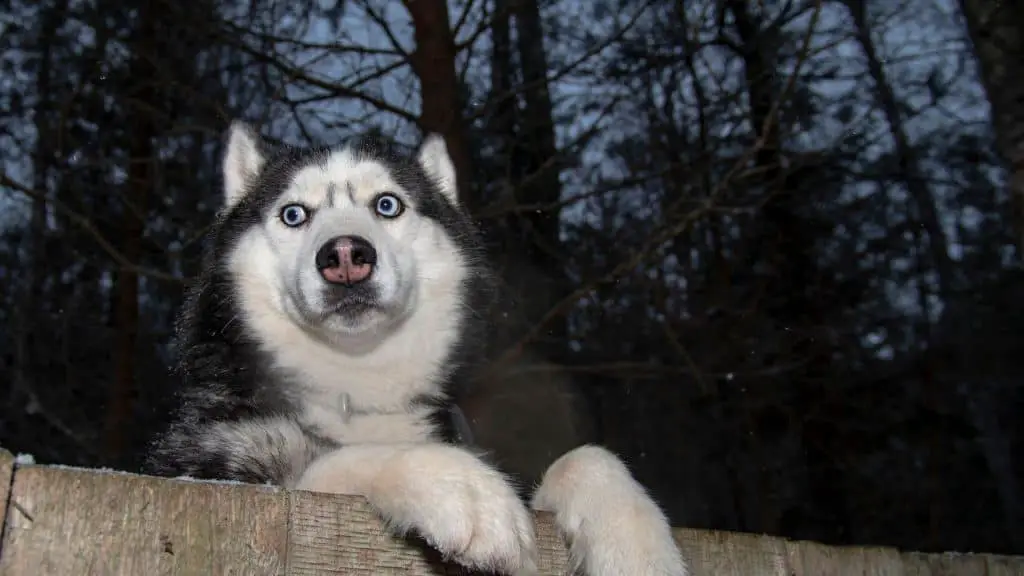
There are several theories on the subject.
One theory is that the blue eyes are an adaptation to the cold, snowy climate of the Siberian Arctic. The blue color helps to reflect light and reduce glare, making it easier for huskies to see in bright conditions.
Another theory is that blue eyes result from genetic mutations that occurred during the breed’s development.
There’s no doubt that Siberian Huskies’ blue eyes are part of what makes them so unique and irresistible.
The Theory that Blue Eyes Are a Result of Genetic Mutations
It is no secret that beauty is in the eye of the beholder. However, some experts believe that blue eyes are gorgeous because they are relatively rare.
In fact, according to one theory, blue eyes are the result of a genetic mutation.
The theory goes that a mutation occurred in the OCA2 gene at some point in human history.
This gene produces melanin, the pigment that gives color to our hair, skin, and eyes.
The mutated gene produced less melanin, resulting in lighter hair, skin, and eyes.
While this mutation initially occurred randomly, it eventually spread through the population because people with blue eyes were more likely to mate with each other.
Over time, the mutation became more and more common, leading to the prevalence of blue eyes today.
While this theory is not conclusive, it does offer a fascinating explanation for one of humanity’s most striking features.
Another Theory Suggests that Blue Eyes Are Due to Cross-Breeding with Other Dog Breeds
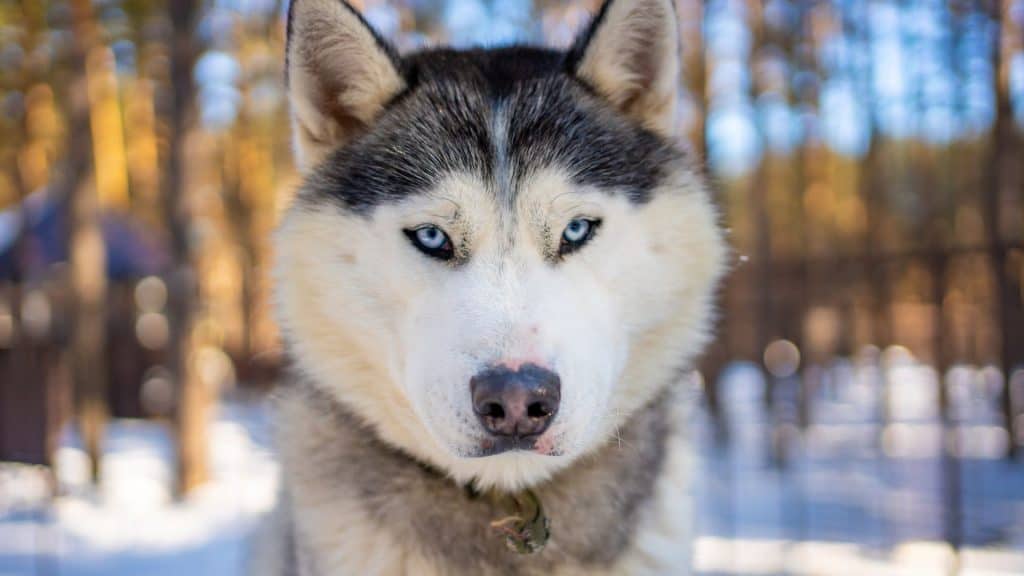
While most Siberian Huskies have blue eyes, some have brown eyes.
This has led some experts to suggest that blue eyes result from cross-breeding with other dog breeds.
The theory goes that Siberian Huskies were cross-bred with dogs with blue eyes at some point in the breed’s history.
Over time, the blue-eyed trait became more and more common until it became one of the defining characteristics of Siberian Huskies.
While this theory is plausible, there is no concrete evidence to support it.
The Truth About Husky Blue Eyes
Blue eyes are often seen as a desired trait in many dog breeds, but did you know that blue eyes in huskies are a defect?
According to scientists, blue eyes in huskies are caused by a lack of pigment in the iris.
This condition is called albinism, and it’s considered a genetic defect.
So why do people continue to breed huskies with blue eyes?
Some people believe that blue eyes make huskies more marketable and more valuable.
However, there are also health concerns associated with blue-eyed huskies.
For example, blue-eyed huskies are more prone to developing eye problems such as cataracts and glaucoma.
So, if you’re looking for a healthy husky, you might want to steer clear of those with blue eyes.
Blue Eyes with Other Dog Breed
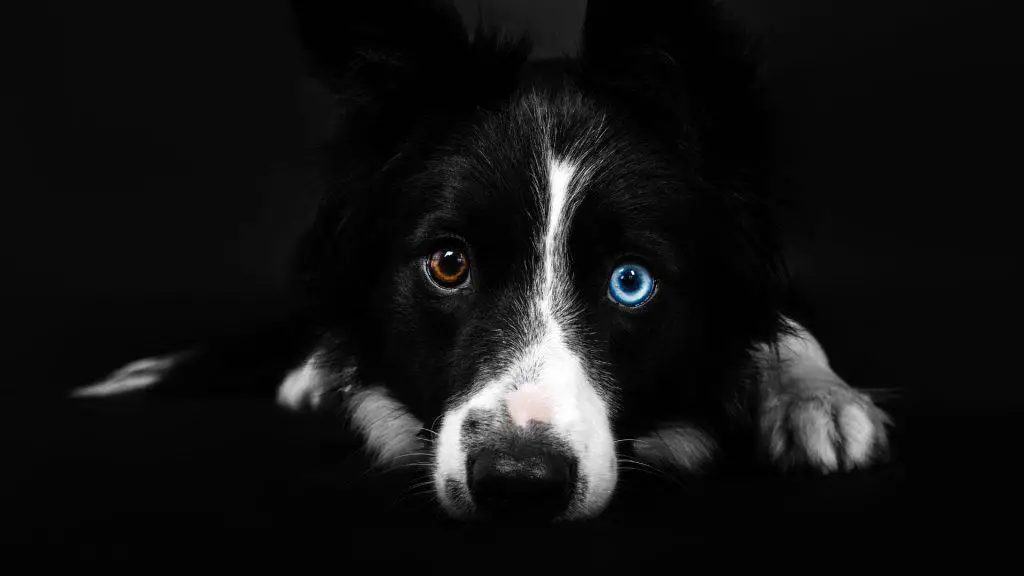
The brilliant hues of the Siberian huskies are complemented by their outstanding features and appearances.
However, Siberian huskies are not the only dog breed with blue eyes.
The blue-eyed breed is Pembroke Welsh Corgis, Border Collies, Australian Shepherd, Dachshund, and Catahoula Leopard Dog.
These dogs have inherited the recessive gene from their parents responsible for the beautiful color.
If both parents don’t have the blue-eyed gene, there’s no way their offspring can have it.
The dominant genes will mask the mutated genes, and the blue-eyed dogs will not be born.
Besides, the coat color of a dog also determines the eye color. For example, huskies with black coats usually have brown eyes.
And the difference between these dogs and huskies with blue coats is that the latter has one copy of the melanin-inhibiting gene.
The blue color in their eyes is due to the reflection of light off the iris, which has no pigment.
So, when sunlight hits their eyes, it gives off a blue hue.
What Makes Huskies Blue Eyes Different
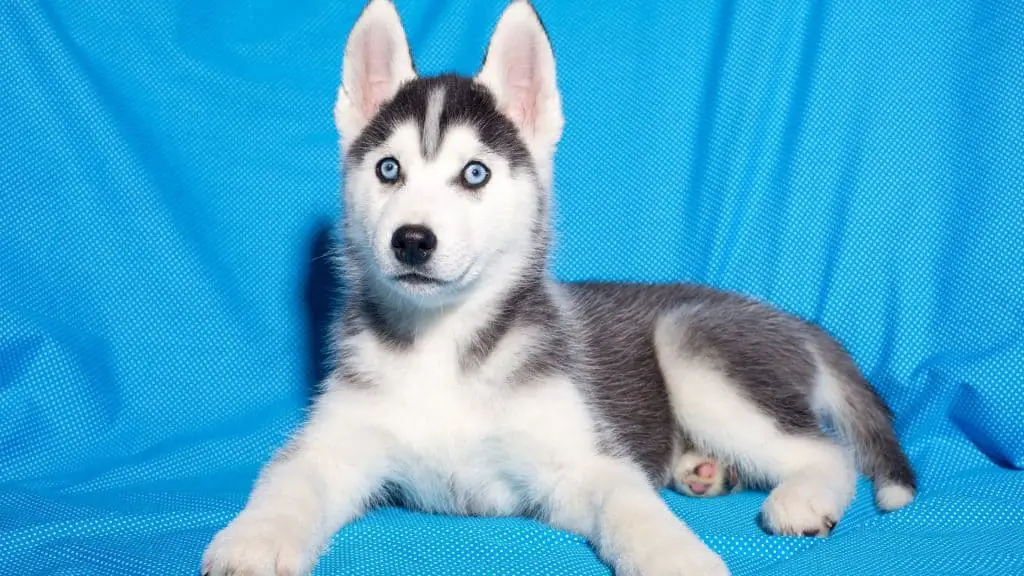
We know now the blue eyes in huskies are due to a genetic mutation.
But what makes huskies different from other blue-eyed breeds?
First of all, huskies are the only dog breed that can have two different colors in each eye.
One may be blue, and the other may be brown, amber, or even particolored.
Secondly, huskies are the only breed with one blue eye and one brown eye.
This is called sectoral heterochromia and results from the interaction between two different genes.
Thirdly, huskies are the only breed of dog that can have particolored eyes.
This means that their irises are not one solid color but two or more colors.
Lastly, huskies are the only breed of dog that can have eyes that change color over time.
For example, a husky puppy may be born with blue eyes, but they may turn brown or amber as they get older.
The Huskies have a variety of eye colors, as shown below. Take a look at this list.
Blue Eyes
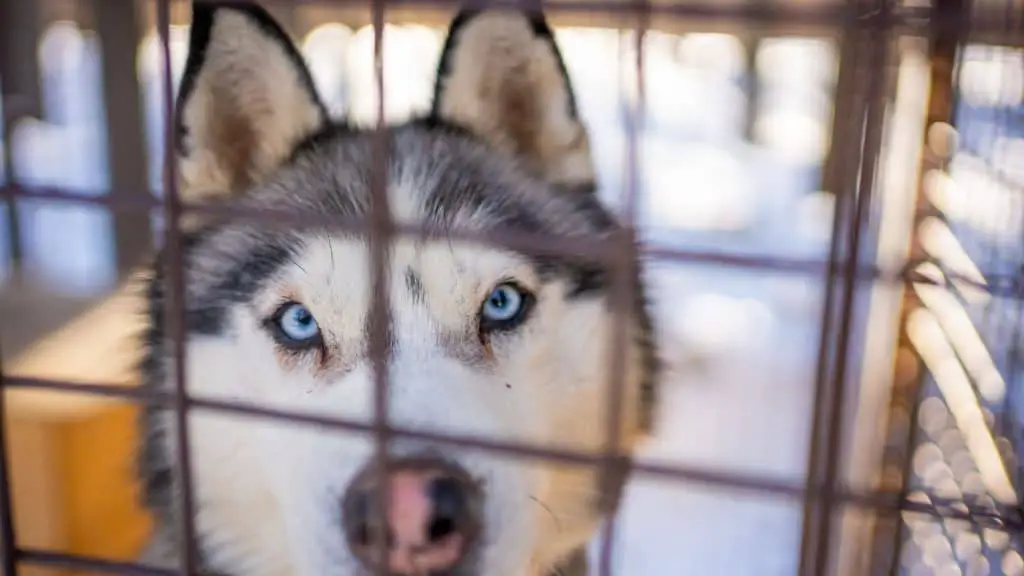
Siberian Huskies are best known for their striking blue eyes, which is one of the reasons they’re so popular.
But did you know that not all Siberian Huskies have blue eyes?
In fact, around 20% of huskies have brown eyes.
While blue eyes are more striking, brown-eyed huskies are just as beautiful.
And in some cases, their brown eyes may even be more appealing to potential owners since they’re less prone to specific health problems.
So if you’re considering adopting a husky, don’t discount the brown-eyed ones!
Contrary to popular belief, blue eyes in huskies are not linked to any health problems. Instead, it is simply a result of genetics.
In fact, all huskies have one thing in common: their blue eyes result from a condition called partial albinism.
While albinism is typically associated with white fur, it can also cause blue eyes.
So the next time you see a blue-eyed husky, you’ll know that there’s no need to worry about their health – they’re just as healthy as any other husky!
Brown Eyes

Huskies are one of the most recognizable dog breeds globally, thanks in part to their striking blue eyes.
However, many huskies have brown eyes.
While the blue-eyed huskies are undoubtedly eye-catching, the brown-eyed variety is no less impressive.
The rich brown color of their eyes is accentuated by the huskies’ thick coats, giving them regal air.
And like blue-eyed huskies, brown-eyed huskies can come in a range of shades, from dark brown to light brown.
So whether you prefer blue eyes or brown eyes, there’s a husky out there for you.
Parti-Colored Eyes
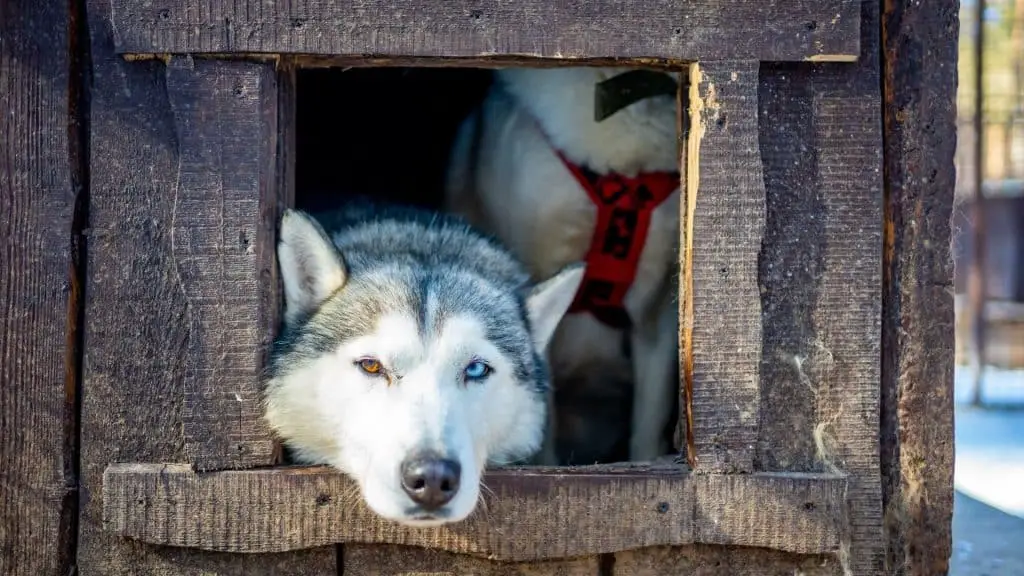
Parti-eyed or split-eyed Siberian huskies are one of the rarest types of eye colors that you can find.
Their unique eye color results from brown and blue pigments being present in one of the eyes.
Although they may look freakish to some, this two-toned eye color does not impact the optical health of the huskies in any way.
While their striking eyes are a central selling point, it’s important to remember that these dogs are still subject to the same health problems as any other Siberian husky.
So, if you’re looking for a unique pet, be sure to research the potential risks before bringing a parti-eyed husky into your home.
Bi-Colored Eyes
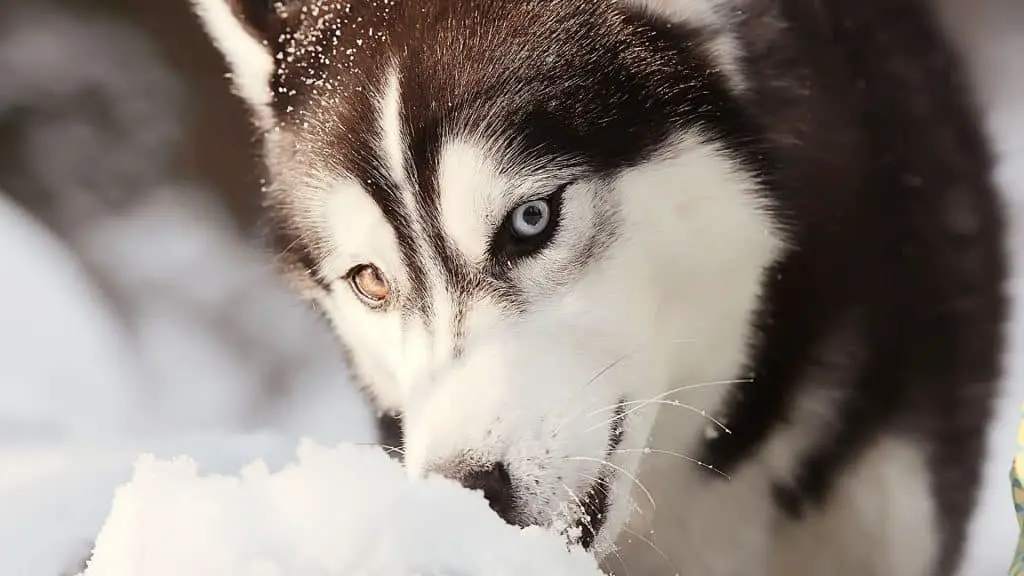
As anyone who has ever owned a Siberian husky can attest, these dogs are indeed one of a kind.
They are stunning, but they also have a unique temperament and a fascinating history.
One of the most striking features of Siberian huskies is their eyes.
Unlike most dog breeds, Siberian huskies can have two different eye colors.
This rare trait is caused by a condition known as heterochromia, and it results in one eye being blue and the other being brown.
While heterochromia is relatively uncommon in the animal kingdom, it is sporadic in dogs.
In fact, out of all the dog breeds globally, only Siberian huskies are known to exhibit this trait.
So if you’re ever lucky enough to spot a Siberian husky with two different colored eyes, you’re seeing something extraordinary.
How to Determining the Eye Colors of The Husky Puppies
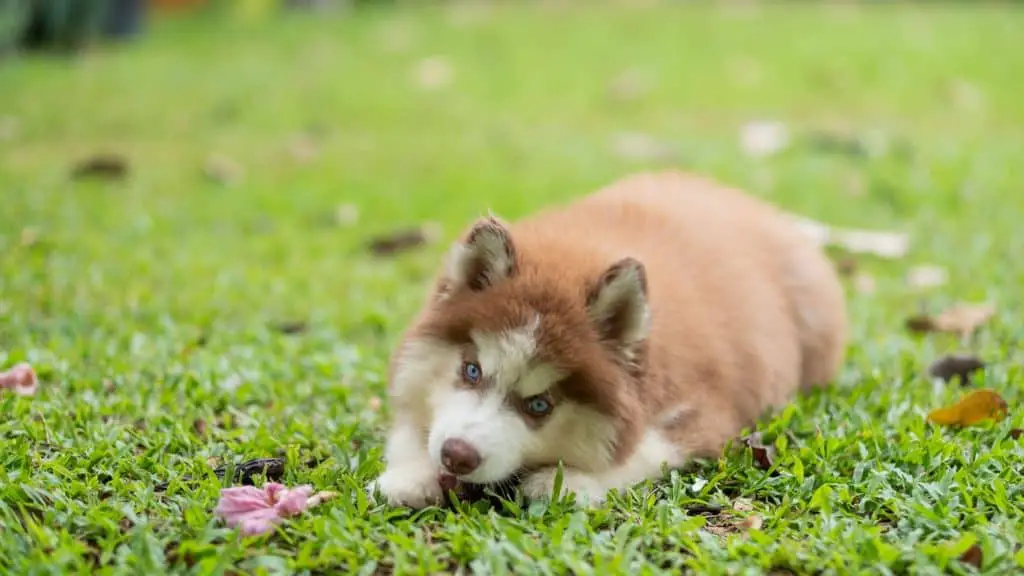
Most people know that Siberian Huskies come in various colors, but did you know that their eye color can also vary?
While the kennel clubs worldwide have acknowledged the different eye colors of Siberian Huskies, knowing the eye color of husky puppies can still be helpful for breeders.
All husky puppies are born with blue eyes, so it can be difficult for breeders to determine what color their eyes will eventually be.
However, there are some tricks that you can use to figure it out. Check it out!
One of the easiest ways to determine the eye color of husky puppies is by looking at their coat color.
Generally speaking, huskies with lighter coats are more likely to have blue eyes, while huskies with darker coats are more likely to have brown eyes.
Of course, there are always exceptions to the rule, so this method is not foolproof.
But it can be a helpful way to narrow down the possibilities.
Another way to determine the eye color of husky puppies is by looking at their markings.
Huskies with a lot of white on their face are more likely to have blue eyes, while those with less white are more likely to have brown eyes.
The size of a husky’s eyes can also help determine its eye color.
Generally speaking, huskies with more enormous eyes are more likely to have blue eyes, while those with smaller eyes are more likely to have brown eyes.
The shape of a husky’s eyes can also help determine their eye color.
Huskies with round eyes are more likely to have blue eyes, while those with almond-shaped eyes are more likely to have brown eyes.
The location of a husky’s eyes can also help determine their eye color.
Huskies with eyes closer together are more likely to have blue eyes, while those with eyes that are further apart are more likely to have brown eyes.
Conclusion
So, there you have it. The mystery of Siberian Husky eyes has been solved!
Now we know that their eye color results from a genetic mutation that causes them to produce less melanin in their irises.
This means that the blue-green color is caused by light scattering as it passes through the pupil and lens.
If you’re a fan of Siberian Huskies or just curious about why their eyes are blue, I hope this article was helpful.
Do you have a Husky? What eye color does your dog have? Let me know in the comments section below!



Leave a Reply
You must be logged in to post a comment.